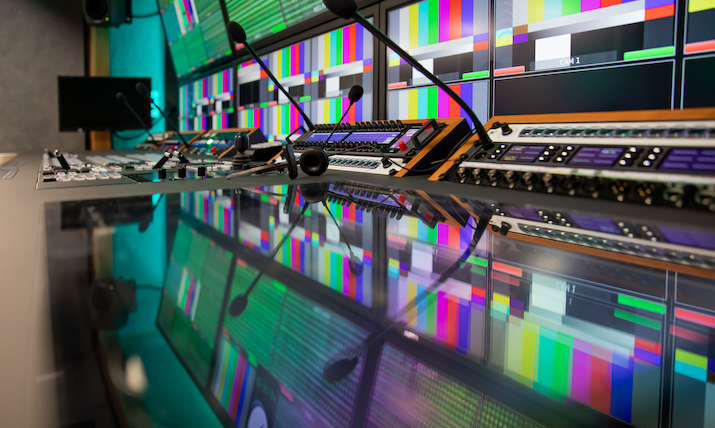On balance: Broadcast Solutions on managing the interdependencies between technology and production needs
 By Rainer Kampe, Broadcast Solutions CTO.
By Rainer Kampe, Broadcast Solutions CTO.
The sports broadcasting industry finds itself at a pivotal juncture, grappling with the complexities of intertwining technological advancements and production necessities. Market consolidation, cost pressure and the acute problems of a lack of skilled workers and cost increases in all areas make it necessary for all stakeholders in the production chain to constantly reinvent themselves and implement innovations.
This results in a rapid evolution of technology, which places immense pressure on production teams to seamlessly integrate cutting-edge innovations, such as 4K, 8K, HDR, remote production, virtual reality, IP-based production, hybrid production, artificial intelligence and machine learning (to name just a few), to meet these demands and enhance the viewer’s experience at the same time. These technologies, while promising a revolution in the industry, also demand steep learning curves and substantial financial investments.
The interdependency between technology and production is a delicate equilibrium that must be maintained. Technology has the potential to significantly elevate the production value of sports broadcasts, creating more engaging and immersive content for viewers. Conversely, production teams must possess the requisite skills and adaptability to harness these technologies effectively, ensuring a smooth and uninterrupted viewing experience. To have the right and sufficient personnel is probably the biggest problem of the industry.
The AI opportunity
One of the most contentious debates surrounding the future of sports broadcasting is the role of artificial intelligence (AI). The potential of AI to transform the industry is undeniable, yet it also presents significant challenges. AI could automate various aspects of the production process, such as camera operation and editing, potentially reducing the demand for human labour and thereby impacting the industry’s workforce. On the other hand, it could solve the labour force problem.
Despite these challenges, the advantages of incorporating AI into sports broadcasting are too significant to overlook. AI has the potential to offer viewers a more personalised and interactive experience, such as customised highlight reels or real-time statistics tailored to individual preferences.
The sports broadcasting industry must navigate a complex landscape, balancing the potential benefits of technology with the associated challenges and ethical considerations. The integration of AI, in particular, presents both opportunities and pitfalls that must be carefully managed to ensure a sustainable and ethical future for the industry.
Remote production
A further technological evolution that needs to be addressed in detail is remote production, which we see as a major trend having an impact on and shaping the future of sports broadcasting.
Firstly, cloud-based platforms are set to become the backbone of our industry, providing the bedrock for content storage, sharing and collaboration. This will empower teams across the globe to access and work on content, irrespective of their physical location, thereby revolutionising remote production workflows.
Secondly, AI and machine learning are not just buzzwords; they are the future. These technologies could automate even directing, thereby not only streamlining remote production but also unlocking new realms of creative storytelling.
Connectivity and bandwidth are the lifeblood of remote production. We anticipate significant advancements in this domain to support the seamless transmission of high-quality live sports content, ensuring that viewers are always in the thick of the action.
The immersive worlds will provide viewers with experiences that are not just watched but lived, bringing them closer to the action than ever before.
In an age where data is king, cybersecurity is paramount. As we rely more on cloud-based solutions and remote access, the focus will be on developing robust security protocols and technologies to safeguard content and production systems from potential threats.
Sustainability is not just a fig leaf; it’s a commitment. Remote production significantly reduces the need for travel and transportation of equipment, thereby minimising our environmental footprint. The industry will have to commit to championing sustainability, with remote production playing a pivotal role in these efforts.
Lastly, the future is even more collaborative in a world where technology providers, broadcasters and production companies work hand in hand, developing interoperable solutions that facilitate seamless remote production workflows, thereby ensuring that the sports broadcasting industry continues to thrive and evolve. However, this development also has its drawbacks. For instance, the electricity consumption for remote production hubs is higher compared to production using outside broadcast vans, as these are constantly ‘on’.
The future of remote production in sports broadcasting is incredibly exciting, with numerous opportunities for innovation and improvement. Technology providers and systems integrators are committed to staying at the forefront of these trends, continuously evolving solutions to meet the changing needs of the industry and deliver exceptional value to clients.

